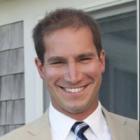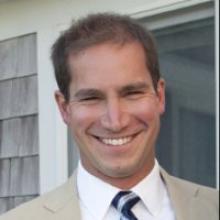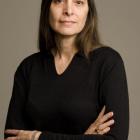I thoroughly enjoyed the Wednesday I spent at the BuildingEnergy 15 conference in March. The experience was incredible - seeing such a large number of people here in New England excited about such an important wave of future energy solutions for the built environment was awe inspiring.
The big take away for me was the realization that we are at the apex of this major wave of change and we need to be up to speed in order to take advantage. There are so many aspects of design and common construction methods that may soon be completely obsolete. Younger generations are already aware of so many aspects of climate change and how important it is to support local companies, farmers, and neighbors - the fundamentals of community. We need not rule out outrageous ideas at this point and must let the designs of the future reflect the comradery among professionals from a variety of fields working together on the next cutting edge designs. It’s about testing, and proving, that this is feasible, and not so far beyond what is affordable. We need to think about long term goals rather than immediate solutions.
The first conference session I chose was “Super Insulated Walls and Moisture: Does Bad Stuff Happen?” presented by Chris Corson and Kohta Ueno. This was not the first time I have seen this type of wall design. Last year in one of my classes at UMA, Matthew O’Malia of GO Logic gave a presentation of his wall system and discussed the fundamental ideals of Passivhaus. I was curious about bridging the gap between the conventional framing methods commonly used today with that of the highly specialized walls of the Passivhaus.
It seems that when a client is striving to live with lower energy costs and a lower carbon footprint when constructing a new home, they are faced with these two extremes. The Passivhaus model seems to appeal to only those willing to go all in. On the other hand, just adding more insulation to a traditionally framed house may not be ideal either. I wanted to see other solutions to this issue, which led me to this session.
Chris Corson’s wall system differed from O’Malia by utilizing a 2x4 stud wall at 16” on center and adding I-joists vertically to the exterior, filling the cavity with dense pack cellulose. O’Malia’s wall is 2x6 with 8” SIP panel on the exterior. Both wall systems are thick, that’s for sure. As someone who comes from a building background, I think that using I-Joists that can be cut onsite and custom fit is something any builder can handle. On the other hand, the SIPs require prefabrication, delivery, and heavy equipment to aid in construction. Not to mention the issue of moving a window or two after the client does a walk through.
The other element - and to me, the most important - is the insulation itself. The SIPs are made using EPS foam which is made using oil - often recycled. However, once it is made, it’s here to stay on earth forever. Cellulose is made from natural products and will provide sufficient insulating properties without causing long term permanent damage to our environment. In both systems the air barrier is in the middle of the wall, creating a vapor open system to both the interior and the exterior. The concept of walls that can absorb and release moisture makes total sense - rather than trapping the moisture inside. I like to compare this system to our skin, because it absorbs and releases moisture while maintaining a separation between interior and exterior.
Kohta Ueno explored the science of how a wall with insulation on the interior affects the exterior sheathing. Some argue that if we continue to add insulation behind the sheathing, the sheathing may become so cold that condensation will occur on the back side, resulting in mold growth and rot. Ueno built a test house that was occupied over a period of three years; he insulated using open-cell foam and cellulose, and filled the walls with many sensors. He concluded that more insulation on the interior had no effect on the plywood (ZIP) and showed no evidence of mold growth.The dew point simply occurred in the insulation, not on the surface of the plywood.
So where does this leave me in my quest to bring the idea of super insulated walls to the client without scaring them and their trusted builder away? The collection of solid data from building scientists all over the world proves that these systems work and outperform the conventional walls we see most commonly. The next step is to comprise a “Cookbook” of methods that builders and homeowners can use to approach existing homes. This may reduce the number of homeowners who resort to clearing a lot to build a new super insulated home. Above all, the most important factor in air sealing and high R-value walls is ventilation. We must stress that the first purchase when modifying a home should be a ventilation system. Fresh, clean air is so important it cannot be overlooked.
This conference has most definitely sparked my interest. I will be incorporating these concepts into all my future projects. My thanks go to Kaplan Thompson Architects for the opportunity. I strongly recommend that this scholarship continue at UMA for years to come.
Adam Wallace is the 2015 recipient of the Kaplan Thompson Architects/Northeast Sustainable Energy Association Scholarship. The scholarship was open to 4th and 5th year students enrolled in the architecture program at the University of Maine at Augusta. The scholarship included a one day pass to the BuildingEnergy Conference in March.
Our Mission
NESEA advances sustainability practices in the built environment by cultivating a cross-disciplinary community where practitioners are encouraged to share, collaborate and learn.






Add comment